Best Hydrangeas You Can Grow In Pots
Adding color and life to your balcony, porch, or patio is easy with hydrangeas. These vibrant plants beautify your outdoor space and have a long blooming season. Before you start planting, there are a few factors to consider.
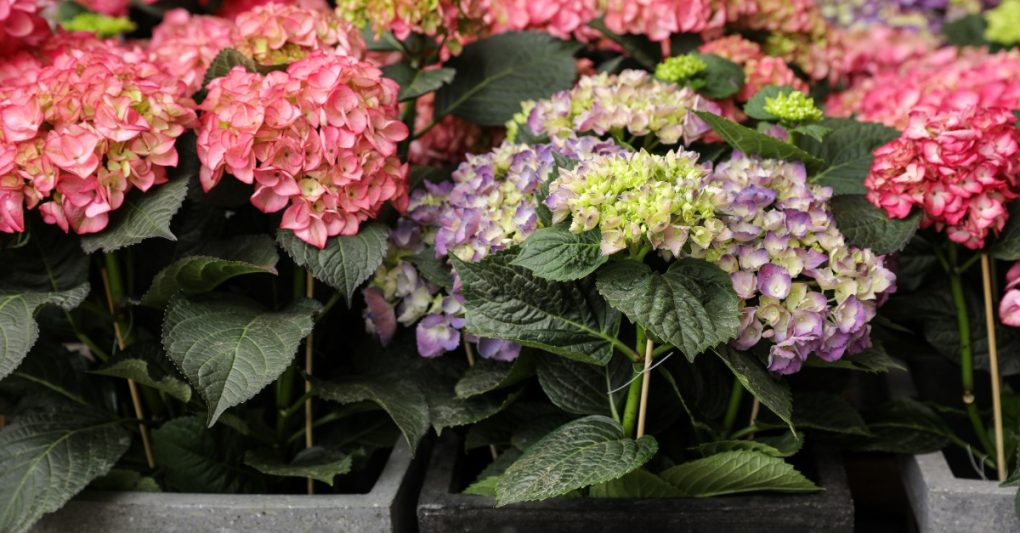
Table of Contents
Benefits of Growing Hydrangeas in Containers
Growing hydrangeas in containers offer several advantages. Whether you have limited space or want to add a decorative touch to your outdoor area, container gardening allows you to move and rearrange your hydrangeas as needed. It also provides better control over soil and moisture levels, helping prevent pests and diseases. With proper care and maintenance, container-grown hydrangeas can thrive for years with the right container, soil mix, and location.
Factors to Consider When Choosing Hydrangeas for Containers
Several factors should be taken into account when selecting hydrangeas for containers. First, consider the size of the hydrangea plant and choose a container that can accommodate its mature size while allowing enough room for soil and root growth. Second, the right soil mix is crucial for healthy growth. Third, choose a well-draining mix that retains moisture without becoming waterlogged. Ensure the container has proper drainage holes as well.
Types of Hydrangeas
Different hydrangea types have specific needs and growth patterns, making some more suitable for container gardening. For example, panicle hydrangeas like Limelight are hardy and thrive well in outdoor containers, even in colder temperatures.
Due to their large blooms, mophead hydrangeas such as Endless Summer require consistent watering and fertilization. Oakleaf hydrangeas, like Alice, prefer part shade conditions and are known for their unique foliage. Consider the size of your container and the ultimate size of the hydrangea when selecting a type for container gardening.
Container Size
Choosing the right container size is essential for the health and growth of your hydrangeas. Please take into account the ultimate size of the plant and its root system. Smaller hydrangea varieties can be grown in smaller containers, while larger ones need bigger pots. Ensure the container has proper drainage holes to avoid waterlogging and provide enough space for root expansion. Regular pruning and maintenance are also important for potted hydrangeas. Selecting the appropriate container size will help your hydrangeas thrive in a container garden.
Climate and Hardiness Zones
Consider your climate and hardiness zone when selecting hydrangeas for container gardening. Different hydrangea species have varying requirements for temperature, humidity, and rainfall. Choose a variety that can thrive in your area. Some hydrangeas tolerate dry conditions better than others, so consider moisture availability. Consulting with a local garden center or horticulturist can help you find your region’s best hydrangeas for container gardening.
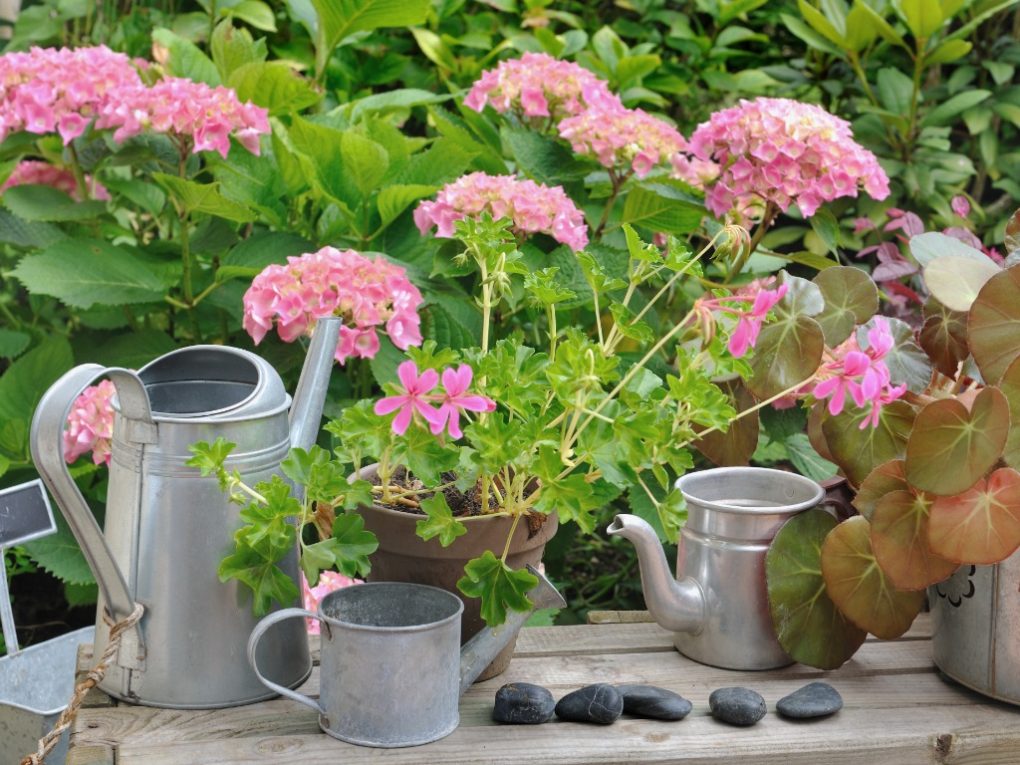
Best Hydrangea Varieties for Container Gardening
Selecting the best hydrangeas for container gardening involves considering compact and dwarf varieties that require minimal pruning and maintenance. Complementing your garden or home decor with the right color of hydrangea blooms is also essential. Before planting in a container, check the sun and water requirements of the chosen variety. Use a high-quality potting mix with proper drainage for optimal growth by carefully selecting your soil and pot.
Hydrangea macrophylla ‘Endless Summer’
Hydrangea macrophylla ‘Endless Summer’ is a popular choice for container gardening due to its stunning, long-lasting blooms. This versatile hydrangea can tolerate full sun and partial shade, making it suitable for various growing conditions. It thrives with regular watering and well-draining soil. Its compact size makes it ideal for smaller containers and urban gardens, providing a beautiful touch of color throughout the summer months.
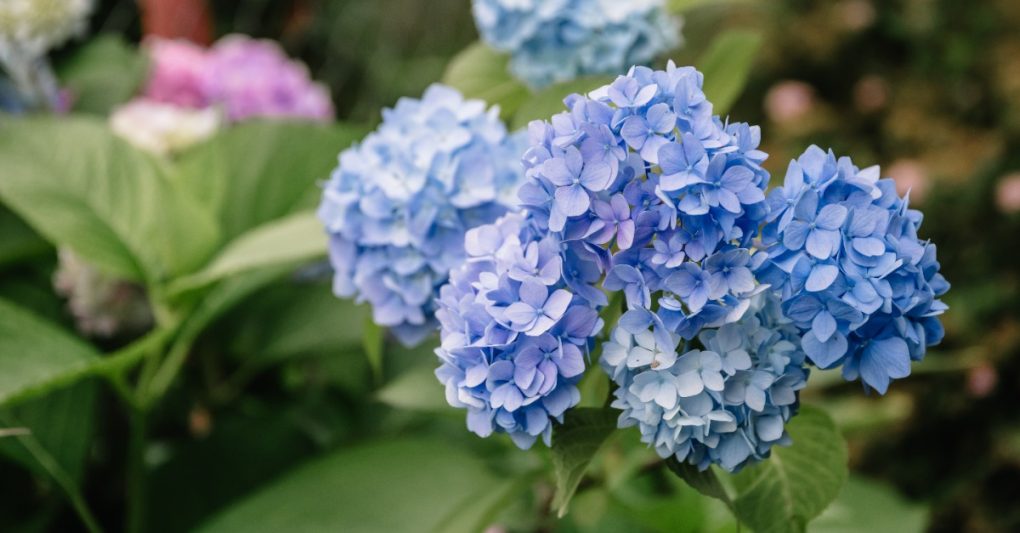
Hydrangea arborescens ‘Annabelle’
Hydrangea arborescens ‘Annabelle’ is an ideal choice for container gardening, thanks to its stunning and unique blooms. This variety produces large, white, ball-shaped flowers that can reach up to 12 inches in diameter, creating a showy display for your patio or balcony. Its compact size makes it perfect for smaller containers and urban spaces. ‘Annabelle’ hydrangeas can bloom from late spring through early fall, adding a touch of elegance to your outdoor space. They tolerate various soil types and growing conditions, making them easy to care for.
Hydrangea macrophylla ‘Penny Mac’
Hydrangea macrophylla ‘Penny Mac’ is a stunning hydrangea variety that thrives in containers. This compact plant produces beautiful clusters of pink or blue flowers, depending on the soil’s pH level. ‘Penny Mac’ requires regular watering and fertilization to bloom throughout summer. When planting in a container, ensure the pot has good drainage to avoid waterlogged roots. This versatile hydrangea can tolerate full sun and partial shade, allowing for flexible placement in your garden or patio. Adding ‘Penny Mac’ hydrangeas to your outdoor space brings color and vibrancy.
Hydrangea paniculata ‘Limelight’
For container gardening, Hydrangea paniculata ‘Limelight’ is a fantastic option. This variety is known for its beautiful, lime-green blooms that add elegance to any outdoor space. ‘Limelight’ hydrangeas thrive in both full sun and partial shade and have strong stems supporting their large blooms’ weight. Ensure you regularly choose a pot with good drainage and water to keep your ‘Limelight’ hydrangeas healthy and thriving.
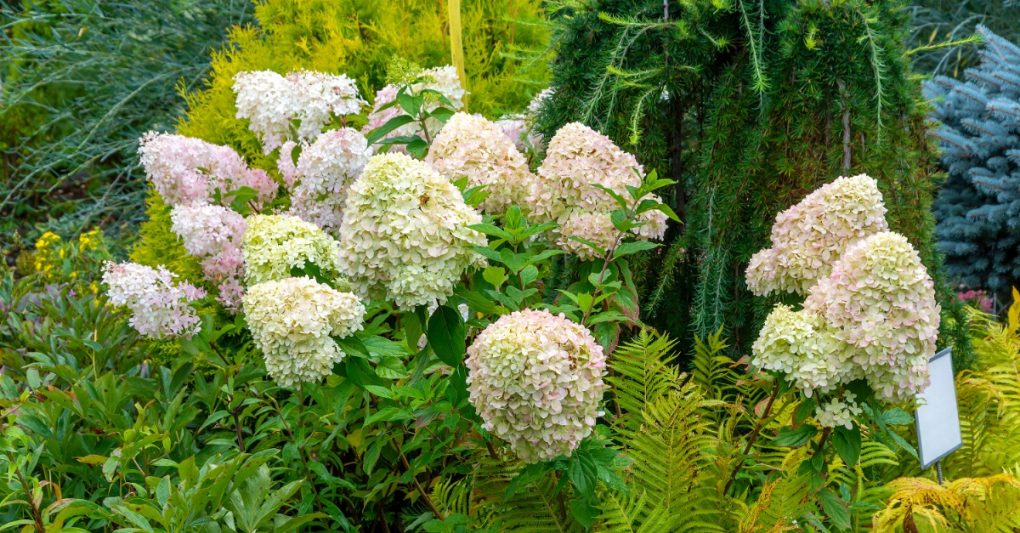
Hydrangea quercifolia ‘Little Honey’
Hydrangea quercifolia ‘Little Honey’ is the perfect hydrangea variety for container gardens seeking a pop of color. This dwarf variety boasts gorgeous foliage that changes color throughout the year, showcasing shades of yellow, orange, and red. Its white flowers bloom in the summer, gradually turning pink as they age, adding an extra layer of visual interest. ‘Little Honey’ is a low-maintenance and hardy plant that tolerates some shade, making it suitable for smaller spaces or balconies with less direct sunlight. This plant will thrive in your container garden for years with well-draining soil and proper care.
Preparing Containers for Planting Hydrangeas
Choosing the right container is crucial for planting hydrangeas. Follow these tips for success:
Choosing the Right Pot and Soil
● Use a container 12-14 inches in diameter for proper root growth.
● Opt for well-draining potting mix with a pH level between 5.2 and 6.2.
● Add organic matter like compost or aged manure to improve soil quality and nutrient levels.
● Use a hydrangea-specific fertilizer to promote healthy foliage and blooms.
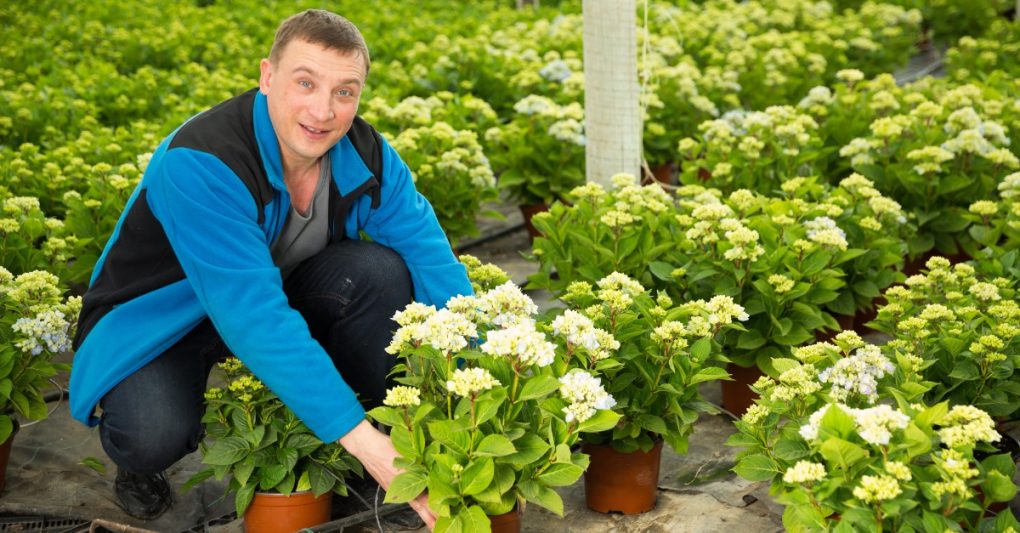
Proper Drainage and Watering
Maintain proper drainage and watering for healthy hydrangeas:
● Select a container with multiple drainage holes.
● Use a well-draining potting mix to prevent water accumulation and root rot.
● Monitor soil moisture regularly and adjust watering as needed.
● Consider adding mulch or using a self-watering container to retain moisture.
Planting and Caring for Hydrangeas in Containers
Follow these guidelines for planting and caring for hydrangeas in containers:
Positioning the Pot
Choose the right location for your potted hydrangea:
● Place the pot in an area with morning sunlight and afternoon shade.
● Avoid placing the pot near heat sources that can damage the plant.
● Ensure proper drainage to prevent root rot and overwatering.
Watering and Fertilizing Requirements
Proper watering and fertilizing are essential for healthy growth:
● Hydrangeas in containers need more frequent watering, especially in hot weather.
● Strike a balance to avoid overwatering and root rot.
● Use slow-release fertilizers for gradual nutrient release or liquid fertilizers for more frequent applications.
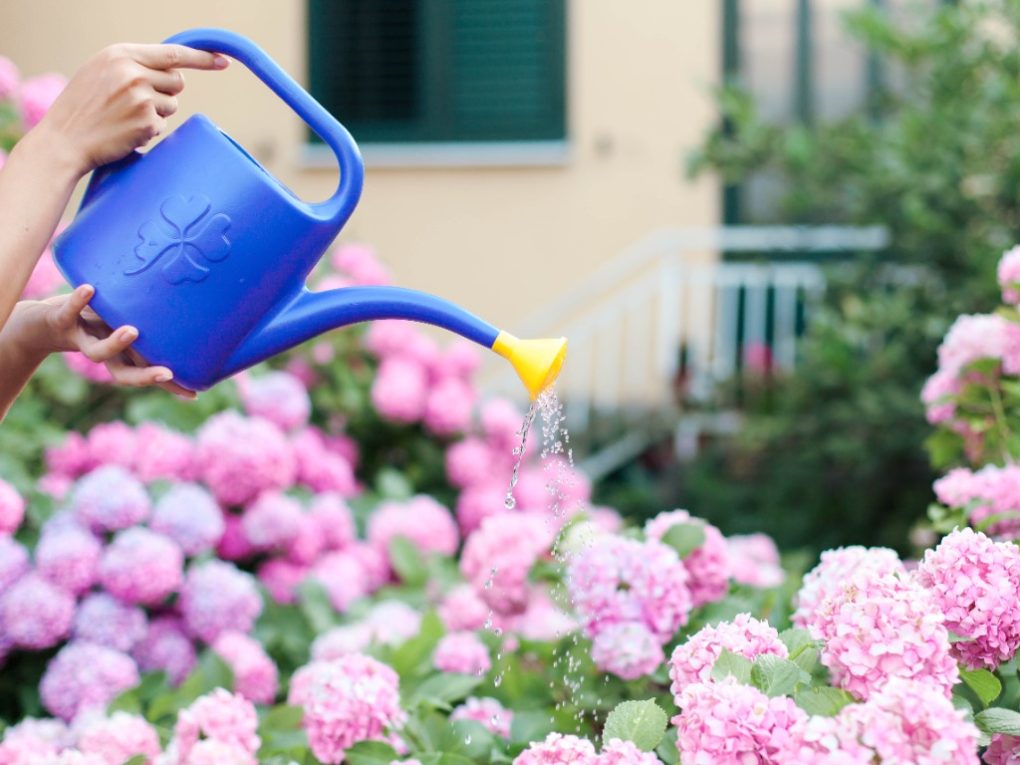
Pruning and Deadheading Techniques
Maintain the shape and size of your hydrangeas:
● Prune to control size and shape, using clean, sharp tools.
● Deadhead to encourage new growth and prolong blooming.
● Be mindful of the hydrangea type and avoid over-pruning.
Common Pests and Diseases to Watch Out for in Potted Hydrangeas
Keep an eye out for these pests and diseases that can affect potted hydrangeas:
● Common pests include aphids, spider mites, and whiteflies.
● Regularly monitor your plants for early pest or disease identification.
● Proper potting mix selection, drainage, and watering practices can help prevent these issues.
Overwintering Potted Hydrangeas
Protect your potted hydrangeas during the winter months:
Preparing the Pots for Winter
Take these steps to prepare your pots for winter:
● Remove dead or damaged plant material.
● Prune the plant back by one-third for easier storage.
● Cover the pot with mulch or straw for insulation.
● Move the pot to a sheltered location away from wind and precipitation.
Providing Winter Protection for the Plants
Ensure your potted hydrangeas survive the winter:
● Insulate the container with burlap or other materials to protect the roots.
● Move the plant to a sheltered location like a garage or covered patio.
● Avoid fertilizing during winter and water sparingly.
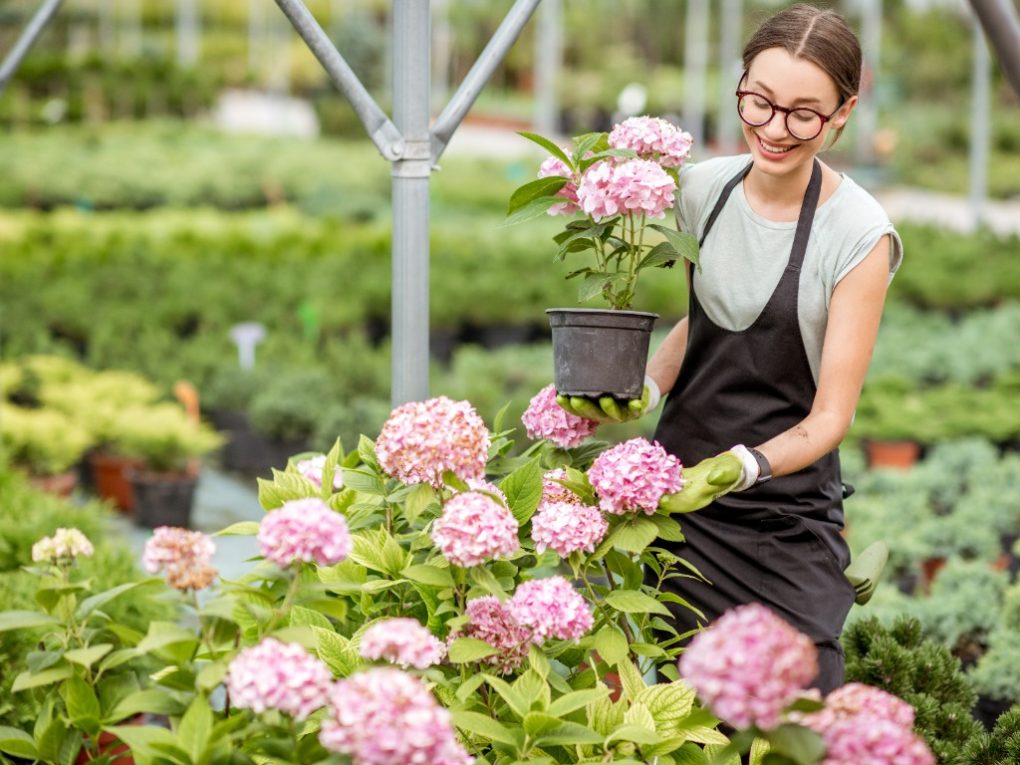
Conclusion
Growing hydrangeas in containers adds beauty to any outdoor space. Follow these tips for successful container gardening:
● Select the right hydrangea varieties and container sizes.
● Use well-draining potting mix and hydrangea-specific fertilizer.
● Maintain proper drainage, watering, pruning, and protection during winter.
Start your hydrangea container garden and enjoy beautiful blooms all season long. Happy planting!
